The next great global warming ‘hiatus’ is coming!

It won’t mean that global warming has stopped, but that won’t stop the usual suspects from making their anti-science claims.
“…as a scientist I was trained you always have to show the negative data, the data that disagrees with you, and then make the case that your case is stronger.” –Richard Muller
Global warming has been occurring at a steady rate for many decades now — possibly for over a century, depending on how you interpret the temperature records — with the past few years setting unprecedented temperature records around the globe. If you go back to 1948–49, the earliest time we’ve had global temperature maps for the entire world, you’ll find that over the vast majority of the Earth, there are more locations seeing the warmest temperatures right now than at any other time. But in terms of “cause for alarm,” what does this actually mean?
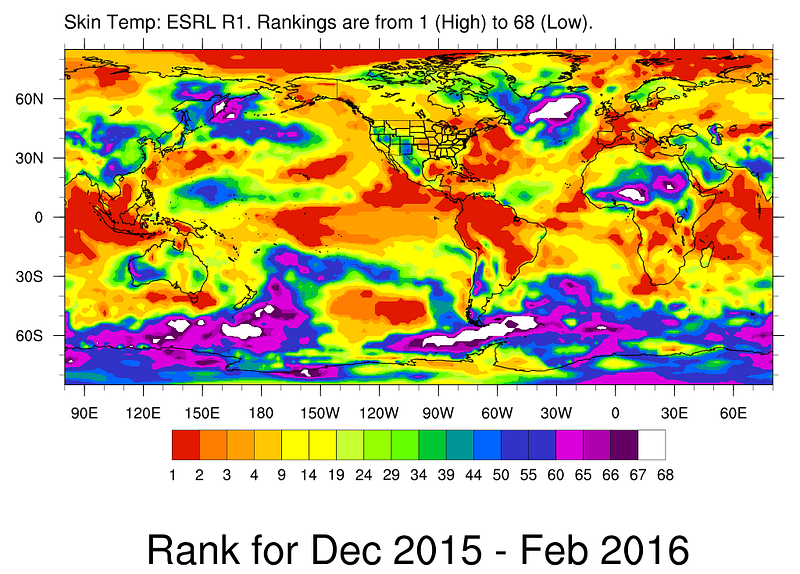
The first thing we have to realize is that there are two things at play here: long-term trends, which is the gradual warming we’re seeing over generational timescales, and short-term variations, which are due to things like the seasons, volcanic eruptions, and weather events like El Niño and La Niña. The record-breaking temperatures we’re seeing across the globe are due to a combination of all the short-term and long-term variations superimposed atop one another, and so although last month — February of 2016 — was the hottest month ever recorded, that isn’t necessarily a reason to freak out.
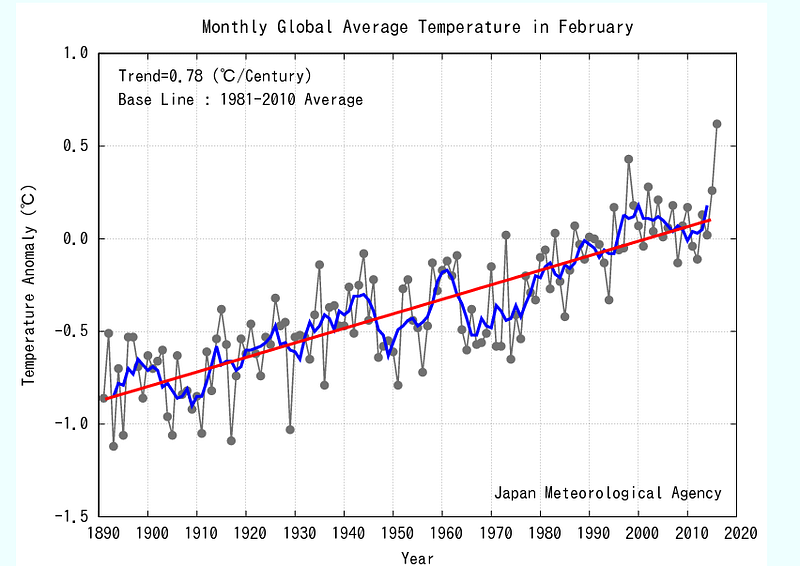
You see, we’re currently experiencing an El Niño event. If you take a look back through the temperature record, many of the largest upward “spikes” you see are due to El Niño years, such as the famous one in 1998. In fact, if you take a look at global average temperatures throughout Februaries, we haven’t had one warmer than the one in 1998 until now.
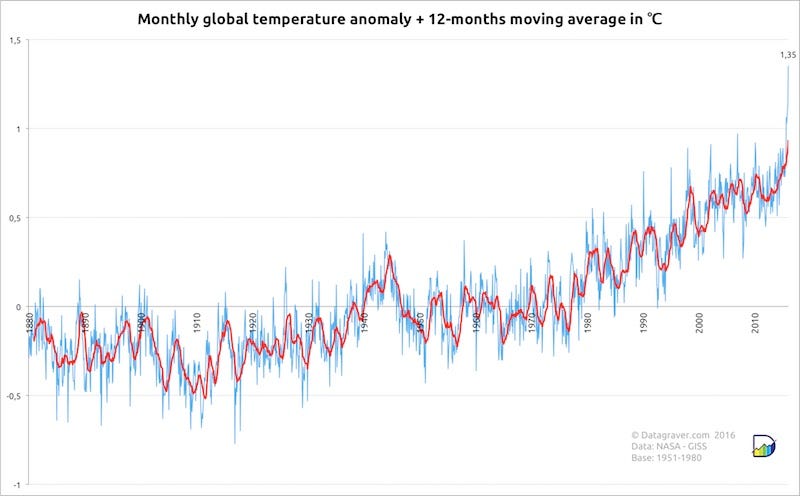
This peak in temperatures that we’re seeing now, the one that spans from 2015–2016, isn’t due to global warming. That is to say, most of the anomalously high temperatures we’re seeing are due to these short-term variations. But what should be far more concerning to anyone who wants to know the truth about climate change is this: the long-term rise in temperatures is continuing at a steady rate. The fact that temperatures appear to be rising at a rate of between 0.40–0.80 °C (0.72–1.44 °F) per century, unabated, is the real cause for concern. That’s what global warming really is, the slow, long-term rise in temperatures. That’s also the component that humans — through emissions reduction, energy efficiency, renewable power, policy changes and (possibly) geoengineering — can do something about.
But there’s an insidious argument that’s going to come up over the coming years (and possibly the next decade or two), once the current spike in temperature subsides: the idea that global warming will have stopped. Global warming doesn’t just stop. It won’t stop unless there’s a causative reason for it to stop, and — at present — there isn’t one. But because the long-term rise (i.e., the “global warming” component) is gradual, and the short-term variations (i.e., the fluctuations above an below the trend-line) are large, it’s going to appear, over 13-to-17 year timescales, that global warming has ceased.
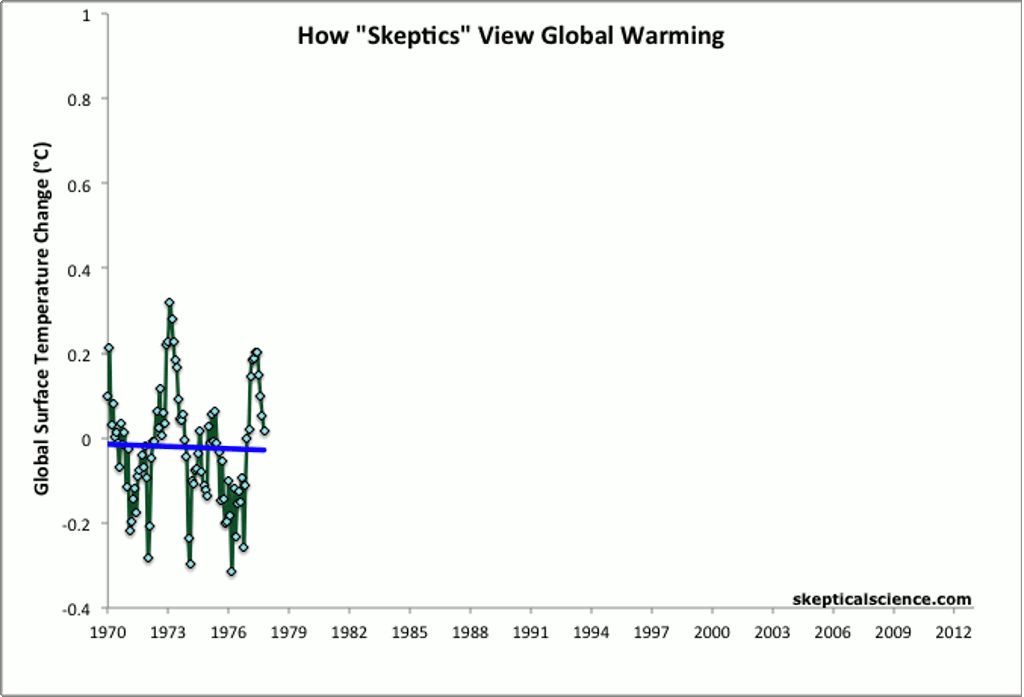
This is because the long-term rise can be easily masked by short-term variations, and the Berkeley Earth Surface Temperature (BEST) study — the one conducted by global warming skeptics that reached the same conclusions as the rest of the climate science community — reached the following conclusion:
Some people draw a line segment covering the period 1998 to 2010 and argue that we confirm no temperature change in that period. However, if you did that same exercise back in 1995, and drew a horizontal line through the data for 1980 to 1995, you might have falsely concluded that global warming had stopped back then. This exercise simply shows that the decadal fluctuations are too large to allow us to make decisive conclusions about long term trends based on close examination of periods as short as 13 to 15 years.
There are prominent climatologists who have made these arguments before (who will likely make these arguments again), and they will be quoted in a great many news outlets and by numerous science writers. If you see an article that cites one of them claiming global warming has stopped and it isn’t yet 2033, the 17 years from now that we’re required to wait to see if the rise continues, please refer them back to this article.
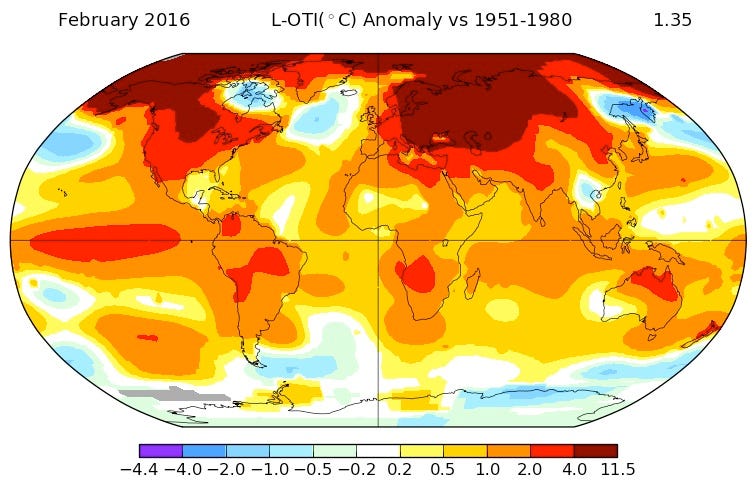
Temperature spikes, like the one we’re experiencing now, are temporary, and in all honestly are part of the normal variations we experience over the short term. But the fact that the global average temperature is rising — and that it continues to rise — is a real long-term problem facing the entire world. Don’t let dishonest arguments that gloss over the actual issue dissuade you from the scientific facts. We can fool ourselves into believing that there isn’t a problem until it’s too late to do anything about it, or we can own up to what the science tells us, and face this problem with the full force of human ingenuity.
The choice is ours.
This post first appeared at Forbes. Leave your comments on our forum, check out our first book: Beyond The Galaxy, and support our Patreon campaign!





